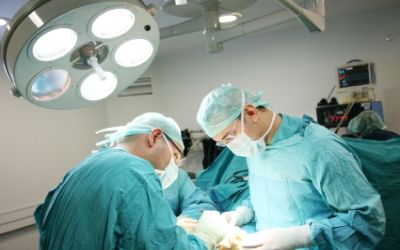Professional Associations Collaborate to Review Evidence on Surgical Attire

In February, the Association of periOperative Registered Nurses (AORN) met with a task force comprised of the American College of Surgeons, American Society of Anesthesiologists, Association for Professionals in Infection Control and Epidemiology, Association of Surgical Technologists, and The Joint Commission to discuss the body of the evidence on surgical attire.
The task force reviewed and discussed the literature related to recommendations for operating room (OR) attire, specifically ear and hair covering, and the value of skull caps as compared to the bouffant which stemmed from a recent study that indicated the porosity of the bouffant head covering was inferior to the skull cap for ear and hair coverage. In the 2014 AORN Guideline for Surgical Attire, the recommendation is that hair should be covered, though there is not a recommendation on which head covering as it can vary with the individual practitioners.
“AORN welcomed the opportunity to reach consensus on the new evidence,” said Lisa Spruce, DNP, RN, CNS-CP, CNOR, ACNS, ACNP, FAAN, director of evidence-based perioperative practice for AORN. “AORN guidelines are developed following an extensive review of all literature and the resulting recommendations are based on the quality of the studies. We are pleased that surgical attire is continuing to be evaluated and AORN will reflect the latest evidence in the revised guideline.”
The AORN Guideline for Surgical Attire is currently under revision and will be reviewed by the AORN Guideline Advisory Board comprised of representatives from the task force, as well as the International Association of Healthcare Central Service Materiel Management (IAHCSMM), the Society for Healthcare Epidemiology of America (SHEA), the American Association of Nurse Anesthetists (AANA). The guideline will be available for public comment from Jan. 2, 2019 through Feb. 22, 2019 and ready for publication in April 2019.
The American College of Surgeons (ACS), the American Society of Anesthesiologists (ASA), the Association of periOperative Registered Nurses (AORN), the Association for Professionals in Infection Control and Epidemiology (APIC), the Association of Surgical Technologists (AST), the Council on Surgical and Perioperative Safety (CSPS); and The Joint Commission (TJC) met on Feb. 27, 2018, to review and discuss the literature related to recommendations for operating room (OR) attire, specifically ear and hair covering.
Over the past two years, as recommendations were implemented, it became increasingly apparent that in practice, covering the ears is not practical for surgeons and anesthesiologists and in many cases counterproductive to their ability to perform optimally in the OR. Furthermore, in reassessing the strength of the evidence for this narrowly defined recommendation, the group concluded the following:
• Evidence-based recommendations on surgical attire developed for perioperative policies and procedures are best created collaboratively, with a multi-disciplinary team representing surgery, anesthesia, nursing, and infection prevention.
• The requirement for ear coverage is not supported by sufficient evidence.
• At present, available scientific evidence does not demonstrate any association between the type of hat or extent of hair coverage and SSI rates. One recent study1 on head coverings (disposable bouffant or skullcap, cloth cap), identified that the commonly available disposable bouffant hat is the least effective barrier to transmission of particles.
• Other issues regarding areas of surgical attire need further evaluation.
Reference:
1. Markel TA, Gormley T, Greeley D, Ostojic J, Wise A, Rajala J, Bharadwaj R, Wagner J. Hats Off: A Study of Different Operating Room Headgear Assessed by Environmental Quality Indicators. JACS, 225(5): 573-581, 2017.
Source: AORN
Bridging the Gap: Operating Room and Central Processing Unite to Improve Surgical Efficiency
April 8th 2025Communication breakdowns between the operating room and central processing led to delays and frustration—until collaboration, cross-training, and shared goals turned metrics around and strengthened teamwork.